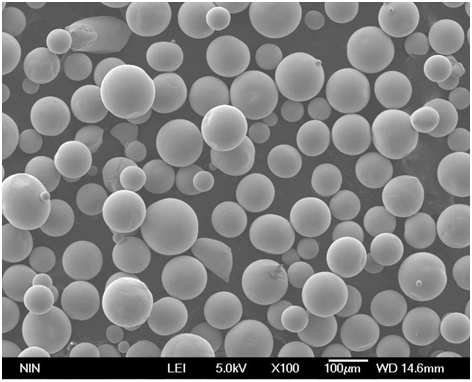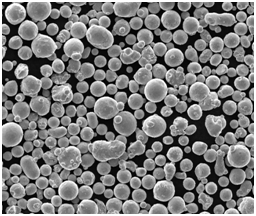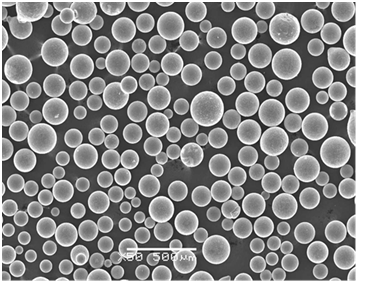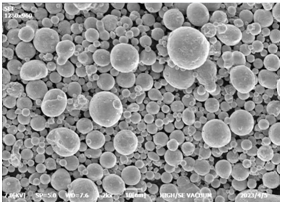Überblick über das Multi Material Jetting (MMJ)
Willkommen in der faszinierenden Welt der Multi-Material-Jetting (MMJ)! Wenn Sie hier sind, sind Sie wahrscheinlich neugierig, was MMJ zu einer herausragenden Technologie im Bereich des 3D-Drucks und der additiven Fertigung macht. Stellen Sie sich Folgendes vor: Sie haben einen Drucker, aber statt Tinte werden winzige Tröpfchen aus verschiedenen Materialien ausgestoßen, um komplexe Strukturen Schicht für Schicht aufzubauen. Cool, oder? MMJ bietet eine unvergleichliche Vielseitigkeit und Präzision, was es zu einem Wendepunkt in Branchen von der Luft- und Raumfahrt bis zum Gesundheitswesen macht.
Was genau ist also Multi Material Jetting? Im Wesentlichen handelt es sich um eine Art des 3D-Drucks, bei der mehrere Materialien gleichzeitig aufgebracht werden. Diese Technologie ermöglicht die Herstellung komplizierter Teile mit unterschiedlichen Eigenschaften, indem Metalle, Polymere und Keramiken in einem einzigen Bauprozess kombiniert werden. Es ist, als hätte man die Möglichkeit, mit einer Palette von Materialien zu malen, von denen jedes dem endgültigen Meisterwerk seine einzigartige Note verleiht.
Einführung in das Multi Material Jetting (MMJ)
Bevor wir in die technischen Feinheiten eintauchen, wollen wir erst einmal die Voraussetzungen schaffen. Multi Material Jetting ist nicht nur eine futuristische Technologie, sondern revolutioniert bereits die Art und Weise, wie wir Produkte entwerfen und herstellen. Durch die Kombination mehrerer Materialien in einem einzigen Prozess ermöglicht MMJ die Herstellung von Teilen mit komplexen Geometrien und maßgeschneiderten Eigenschaften. Das bedeutet, dass Sie ein Teil haben können, das sowohl flexibel als auch starr ist, oder eines, das leitende und isolierende Materialien kombiniert - alles in einem einzigen nahtlosen Prozess.

Zusammensetzung von Multi Material Jetting (MMJ)
Wenn wir über MMJ sprechen, ist die Zusammensetzung der verwendeten Materialien entscheidend. Hier ist eine Aufschlüsselung der wichtigsten Materialien:
| Material Typ | Zusammensetzung | Eigenschaften |
|---|---|---|
| Metals | Rostfreier Stahl, Titan, Aluminiumlegierungen | Hohe Festigkeit, Leitfähigkeit, thermische Stabilität |
| Polymere | ABS, PLA, Fotopolymere | Flexibilität, Biokompatibilität, einfache Verarbeitung |
| Keramik | Tonerde, Zirkoniumdioxid | Härte, Wärmebeständigkeit, elektrische Isolierung |
| Verbundwerkstoffe | Metall-Polymer-Gemische, Keramik-Polymer-Gemische | Verbesserte mechanische Eigenschaften, maßgeschneiderte Leitfähigkeit und Flexibilität |
Jedes Material bringt etwas Einzigartiges auf den Tisch. Metalle bieten Robustheit und Langlebigkeit, Polymere bieten Flexibilität und Benutzerfreundlichkeit, während Keramik perfekt für Hochtemperaturanwendungen geeignet ist.
Merkmale von Multi-Material-Jetting (MMJ)
Das Verständnis der Eigenschaften von MMJ hilft uns, seine Vielseitigkeit und sein Potenzial zu schätzen. Hier sind einige Schlüsselmerkmale:
- Präzision und Genauigkeit: MMJ kann hochauflösende Drucke mit einer Schichtdicke von bis zu 16 Mikrometern erzielen.
- Vielseitigkeit der Materialien: Die Möglichkeit, verschiedene Materialien in einem einzigen Prozess zu kombinieren, eröffnet unendliche Möglichkeiten für die Herstellung multifunktionaler Teile.
- Oberflächengüte: MMJ-Teile haben in der Regel eine glatte Oberfläche, wodurch sich die Notwendigkeit einer Nachbearbeitung verringert.
- Komplexe Geometrien: Komplizierte Entwürfe, die mit traditionellen Fertigungsmethoden nicht möglich wären, lassen sich leicht realisieren.
Anwendungen von Multi Material Jetting (MMJ)
Die Anwendungen von MMJ umfassen ein breites Spektrum von Branchen. Werfen wir einen Blick auf einige der bekanntesten davon:
| Industrie | Anmeldung | Beispiele |
|---|---|---|
| Gesundheitswesen | Prothesen, Zahnimplantate, medizinische Geräte | Maßgeschneiderte Prothetik, biokompatible Implantate |
| Luft- und Raumfahrt | Leichte Bauteile, komplexe Baugruppen | Triebwerksteile, leichte Strukturkomponenten |
| Automobilindustrie | Prototyping, Funktionsteile | Individuelle Armaturenbretter, ergonomische Sitze |
| Konsumgüter | Maßgeschneiderte Produkte, detailgetreue Modelle | Personalisierte Schmuckstücke, komplizierte Miniaturen |
| Elektronik | Gedruckte Leiterplatten, tragbare Geräte | Flexible PCBs, Smartwatches |
Jede Branche profitiert von den einzigartigen Fähigkeiten von MMJ, sei es bei der Herstellung von leichten und dennoch stabilen Bauteilen für die Luft- und Raumfahrt oder von hochdetaillierten und personalisierten Konsumgütern.






Spezifikationen und Normen im Bereich Multi Material Jetting (MMJ)
Wenn es um MMJ geht, ist die Einhaltung von Spezifikationen und Standards entscheidend für die Gewährleistung von Qualität und Konsistenz. Hier ein Blick auf einige der wichtigsten Spezifikationen und Standards:
| Parameter | Spezifikation | Einzelheiten |
|---|---|---|
| Schichtdicke | 16-32 Mikrometer | Bestimmt die Auflösung und Oberflächengüte des Teils |
| Volumen aufbauen | Bis zu 1000 x 800 x 500 mm | Maximale Größe des druckbaren Objekts |
| Materialtoleranz | ±0,1% | Präzision bei der Materialabscheidung |
| Druckgeschwindigkeit | 10-30 mm/Stunde | Variiert je nach Material und Komplexität des Teils |
| Normen | ISO/ASTM 52900, ASTM F2792 | Standardrichtlinien für additive Fertigungsverfahren |
Lieferanten und Preisangaben für Multi-Material-Jetting (MMJ)
Für jeden, der die MMJ-Technologie nutzen möchte, ist es wichtig, den richtigen Anbieter zu finden und die damit verbundenen Kosten zu verstehen. Hier ist eine Tabelle mit einigen prominenten Anbietern und Preisdetails:
| Anbieter | Verfügbare Materialien | Preisgestaltung | Kontaktinformationen |
|---|---|---|---|
| Stratasys | Polymere, Metalle, Verbundwerkstoffe | Beginnend bei $50/kg | www.stratasys.com |
| 3D Systems | Polymere, Metalle | Beginnend bei $70/kg | www.3dsystems.com |
| HP | Polymere | Beginnend bei $60/kg | www.hp.com |
| Materialisieren | Polymere, Keramiken, Metalle | Individuelle Preisgestaltung | www.materialise.com |
| EOS | Metalle, Polymere | Beginnend bei $100/kg | www.eos.info |
Die Preise können je nach Materialart, Menge und Lieferant variieren. Es ist immer eine gute Idee, Angebote einzuholen und Optionen zu vergleichen, bevor Sie eine Entscheidung treffen.
Vergleich der Vor- und Nachteile von Multi Material Jetting (MMJ)
Jede Technologie hat ihre Stärken und Schwächen. Lassen Sie uns die Vor- und Nachteile von MMJ vergleichen:
| Aspekt | Vorteile | Benachteiligungen |
|---|---|---|
| Material Vielseitigkeit | Kann mit mehreren Materialien gleichzeitig drucken | Begrenzt durch Materialverträglichkeit |
| Präzision | Hohe Auflösung und Genauigkeit | Langsamere Druckgeschwindigkeit im Vergleich zum Ein-Material-Druck |
| Komplexität | Fähigkeit zur Herstellung komplizierter Geometrien und multifunktionaler Teile | Erfordert fortgeschrittene Software und Fachwissen |
| Oberflächengüte | Glatte Oberfläche reduziert den Nachbearbeitungsbedarf | Je nach Anwendung kann noch etwas Nachbearbeitung erforderlich sein |
| Kosten | Kostengünstig für die Herstellung komplexer Teile in kleinen Stückzahlen | Die anfänglichen Einrichtungs- und Materialkosten können hoch sein |
Detaillierte Beschreibungen der Metallpulvermodelle
Lassen Sie uns nun auf einige spezifische Metallpulvermodelle eingehen, die in MMJ verwendet werden, und ihre einzigartigen Eigenschaften und Anwendungen hervorheben:
- Rostfreier Stahl 316L: 316L ist für seine Korrosionsbeständigkeit und Festigkeit bekannt und eignet sich ideal für medizinische Implantate und Geräte zur Lebensmittelverarbeitung.
- Titan Ti6Al4V: Diese leichte und feste Legierung wird häufig in der Luft- und Raumfahrt sowie in der Biomedizin eingesetzt.
- Inconel 718: Eine Nickel-Chrom-Legierung mit hervorragenden Hochtemperatureigenschaften, ideal für Turbinenschaufeln und Raketentriebwerke.
- Aluminium AlSi10Mg: Diese Legierung verbindet geringes Gewicht mit guten mechanischen Eigenschaften und eignet sich daher für Teile in der Automobil- und Luftfahrtindustrie.
- Kobalt-Chrom (CoCr): CoCr ist für seine Verschleißfestigkeit und Biokompatibilität bekannt und wird für zahnmedizinische und orthopädische Implantate verwendet.
- Martensitaushärtender Stahl (MS1): Dieser hochfeste Stahl wird für Werkzeuge und hochbeanspruchte Teile verwendet.
- Nickellegierung 625: Diese Legierung ist korrosions- und hochtemperaturbeständig und wird in der chemischen Industrie und in der Schifffahrt eingesetzt.
- Kupfer (Cu): Aufgrund seiner hervorragenden thermischen und elektrischen Leitfähigkeit wird Kupfer in der Elektronik und in Wärmetauschern verwendet.
- Werkzeugstahl H13: H13 ist für seine Härte und Beständigkeit gegen thermische Ermüdung bekannt und wird im Druckguss und in der Formgebung verwendet.
- Gold (Au): Abgesehen von seinem ästhetischen Reiz wird Gold in der Elektronik und in medizinischen Geräten wegen seiner Leitfähigkeit und Biokompatibilität verwendet.
Jedes Metallpulvermodell hat seine spezifischen Anwendungen und Vorteile, was MMJ zu einer vielseitigen Technologie für verschiedene Branchen macht.

FAQ
| Frage | Antwort |
|---|---|
| Was ist Multi Material Jetting (MMJ)? | MMJ ist eine 3D-Drucktechnologie, bei der mehrere Materialien gleichzeitig aufgebracht werden, um komplexe Teile herzustellen. |
| Welche Materialien können in MMJ verwendet werden? | Metalle, Polymere, Keramiken und Verbundwerkstoffe können alle in MMJ verwendet werden. |
| Was sind die Vorteile von MMJ? | Hohe Präzision, Materialvielfalt, glatte Oberflächen und die Möglichkeit, komplexe Geometrien zu erstellen. |
| Was sind die Grenzen von MMJ? | Hohe Kosten für die Ersteinrichtung, langsamere Druckgeschwindigkeiten und Probleme mit der Materialkompatibilität. |
| Welche Branchen profitieren von MMJ? | Gesundheitswesen, Luft- und Raumfahrt, Automobilindustrie, Konsumgüter und Elektronik. |
| Wie schneidet MMJ im Vergleich zu anderen 3D-Druckverfahren ab? | MMJ bietet eine größere Materialvielfalt und Präzision, kann aber komplexer und kostspieliger sein. |
| Was ist das typische Bauvolumen für MMJ? | Bis zu 1000 x 800 x 500 mm, je nach Maschine. |
| Gibt es Standardrichtlinien für MMJ? | Ja, ISO/ASTM 52900 und ASTM F2792 enthalten Richtlinien für additive Fertigungsverfahren. |
| Wie wähle ich einen Lieferanten für MMJ-Materialien aus? | Vergleichen Sie Materialverfügbarkeit, Preise und den Ruf des Lieferanten. Fordern Sie Angebote an, um das beste Angebot zu erhalten. |
| Was sind die typischen Anwendungen von MMJ? | Passgenaue Prothesen, leichte Komponenten für die Luft- und Raumfahrt, funktionelle Automobilteile und vieles mehr. |

